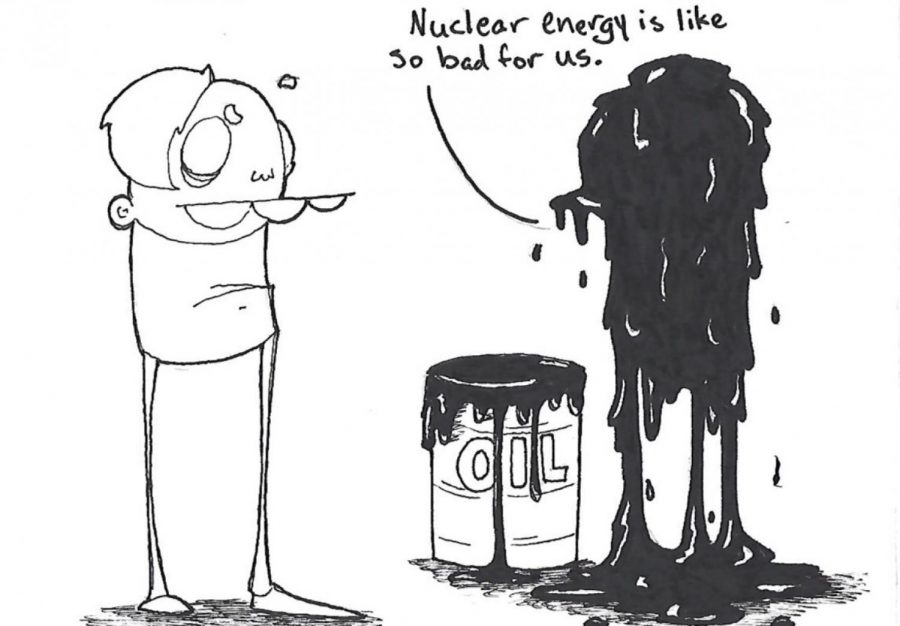Stop fearing the nuclear alternative
The word ‘nuclear’ has a negative connotation. When I hear it, my mind starts to imagine mushroom clouds, black and white photographs of Hiroshima, radioactive poisoning and uninhabited towns in Ukraine. But I remind myself that these mental images are the result of what my mind keeps adding on—bomb.
When it comes to nuclear energy, I think that a good bit of people encounter the same sensation. Because of the bad reputation of the first word and the brain’s tendency to add “bomb” to the end of it, the idea of nuclear energy is not greeted with unanimous approval. Instead of looking forward to a cleaner and more maintainable energy solution for the future, there is a hesitation. Despite the pollution caused by natural energy, some people seem to be stuck with misconceptions of nuclear energy, not seeing the potential it holds.
In reality, the way a nuclear energy plant works is pretty straightforward and harmless. The difference between these two is the uranium isotope used and the speed of the reaction. Basically, the only reason nuclear energy is called so is because of the splitting of uranium atoms. When these uranium atoms are split, excess energy is given off in the form of heat. This heat then converts water to steam, and the steam powers a turbine. According to an article “How Deadly Is Your Kilowatt? We Rank The Killer Energy Sources,” the entire process is the safest way the United States currently produces energy with only about .1 deaths per trillion kilowatt hour of energy produced. In comparison, the production of coal power contributes to 10,000 U.S. deaths per trillion kilowatt hour.
Not only is nuclear energy safer than it might sound, it is also cleaner. The entire process involves absolutely none of the carbon emission associated with oil and coal, meaning that this form of energy production does not contribute to the greenhouse effect that causes global warming. And while the byproduct of radioactive waste can be a concern, it dwindles under the realization that all of the nuclear fuel exhausted in every nuclear plant in the past 50 years would fill a football field to a depth of less than 30 feet, according to the Center for Nuclear Science and Technology Information.
The efficiency and reliability of nuclear energy is another pro of the process that stands out to me. Uranium, the atom that nuclear energy plants split, is so energy-rich that one fuel pellet the size of a fingertip contains as much energy as 17,000 cubic feet of natural gas, 1,780 pounds of coal or 149 gallons of oil, according to the article “Nuclear Power: The Good, The Bad, and The Beautiful” by Sam Good. Unlike wind or solar alternatives, nuclear energy is not subject to weather conditions and provides a constant source of energy around 91% of the time.
Even though nuclear energy is clean, efficient, reliable and currently the safest means of energy production in the United States, it is not perfect. In order to remove the stigma that nuclear energy is dangerous, utmost care needs to be taken to keep it safe. As that continues to happen, I cannot help but believe that nuclear energy will pave the road to the future and will provide an effective energy alternative to oil and gas.

Your donation will support The Lion's Roar student journalists at Southeastern Louisiana University.
In addition, your contribution will allow us to cover our annual website hosting costs.
No gift is too small.






